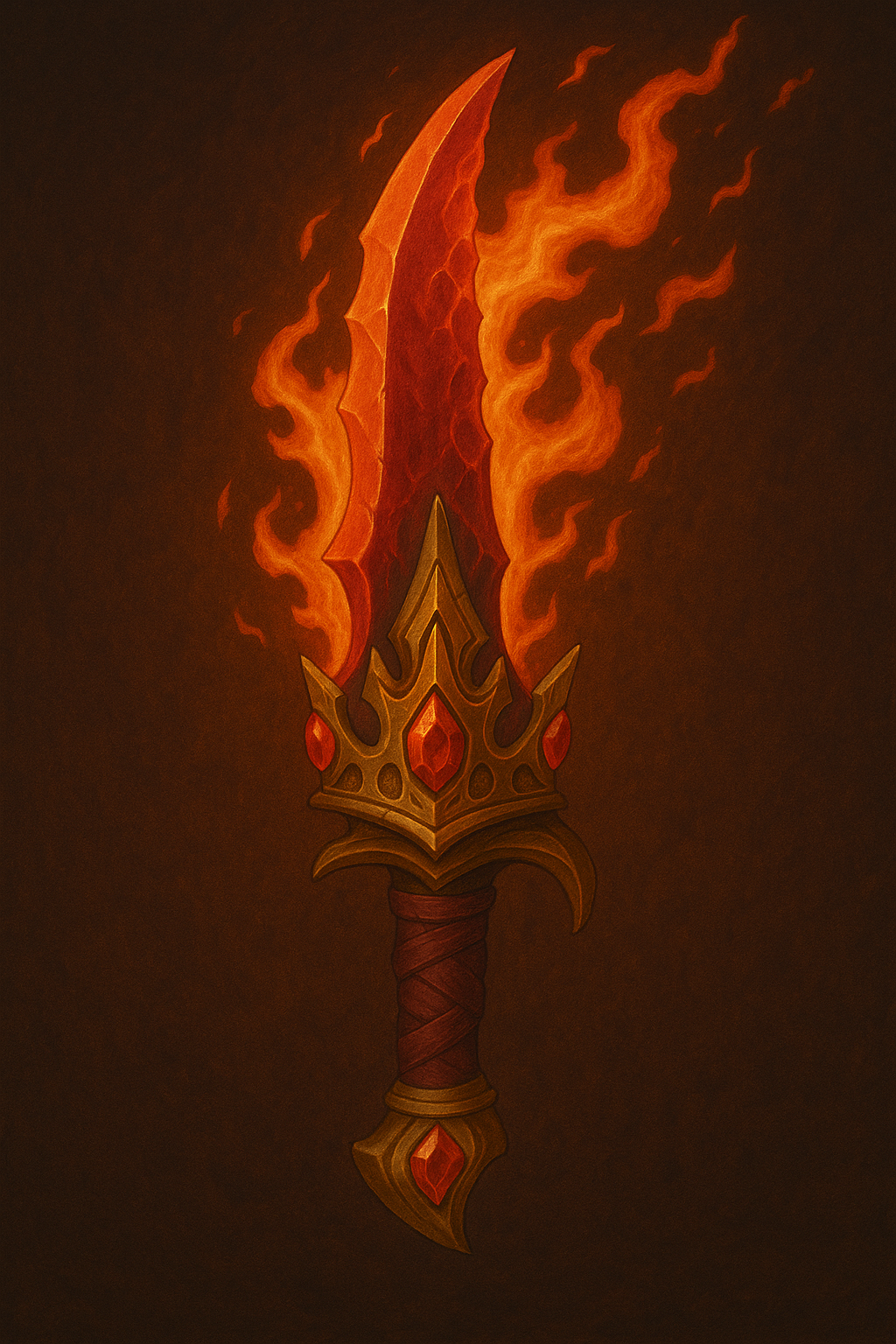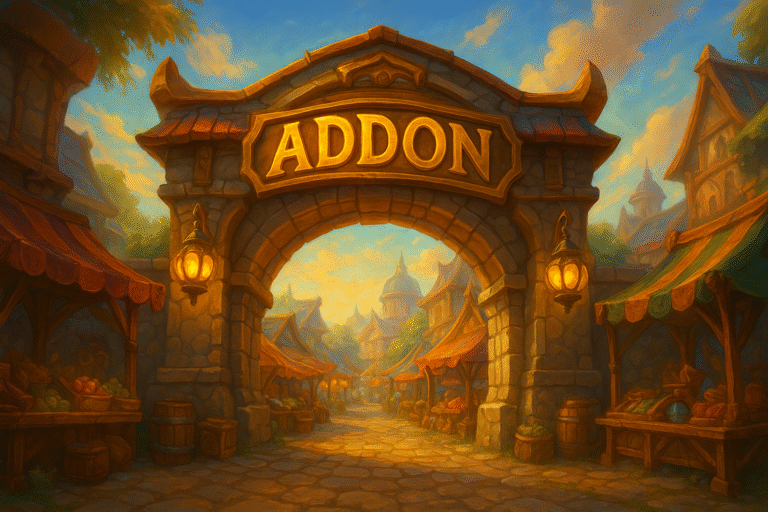How to Get a Scalding Queenmaker’s Shiv in World of Warcraft: War Within
In the labyrinthine depths of War Within, few weapons strike as much curiosity-or fear—as the Scalding Queenmaker’s Shiv. This is no ordinary dagger; it is a scorching, whispering artifact bound in both molten magic and long-buried lore. Rogues, Assassins, and other dexterity-based classes dream of wielding it not just for its high weapon DPS or scaling effects, but because it symbolizes a full mastery of War Within’s endgame systems.

While many players seek shortcuts through a mythic plus carry to fast-track their loot haul, the Shiv resists easy acquisition. It demands engagement with complex mechanics, faction alignment, dungeon rotations, and occasionally, the right kind of luck. This guide breaks down the path not just to claim the Shiv, but to understand its place in the broader tapestry of the expansion’s evolving weapon economy.
Forged in Ash: What the Shiv Represents
The Scalding Queenmaker’s Shiv isn’t simply an item drop; it’s a crafted myth, embedded in the meta-narrative of Khaz Algar’s deeper conflict. From a narrative standpoint, this blade was once the ceremonial dagger of Queen Azurelia, reforged in betrayal and quenched in the magma pools of the Molten Span. Blizzard’s designers didn’t just make a rogue weapon—they made a symbol of cunning turned into wrath.
Mechanically, the Shiv features a unique on-hit DoT effect known as “Searing Doubt”, which stacks with critical hits and converts a portion of inflicted damage into fire damage over time. The Shiv scales aggressively with secondary stats like Haste and Versatility, making it a priority drop for builds that revolve around bleeds, poisons, or dots. Its passive “Queen’s Decree” gives a 3% chance to reset cooldowns on Shiv and Poison Bomb, making it a wild-card choice in mythic progression and PvP skirmishes.
Dungeons, Difficulty, and Drop Logic
Most players will first encounter the Shiv in The Crucible of Embers, a mid-tier dungeon located deep within the Blistered Expanse. The final boss, Ignazia the Flamebound, has a chance to drop the Scalding Queenmaker’s Shiv—but only on Mythic+ difficulty. Moreover, the drop rate appears tuned for replayability.
Weekly lockouts and dungeon rotation rules mean players must align both their dungeon key and affix schedule carefully. The encounter itself is notorious for multi-phase mechanics and fire-heavy AoE bursts that test not just movement, but group cohesion. While many players opt to brute-force the dungeon with a high ilvl party or through organized mythic plus carry services, those who go in raw quickly learn that positioning, interrupt coordination, and phase awareness are mandatory.
The Shiv doesn’t drop easily. It drops to players who earn it through mechanical mastery or relentless repetition. Success hinges on meticulous planning, especially since failing even a single mechanic in the final encounter can drastically decrease the group’s odds of completion. Veteran groups often focus intensely on communication, marking specific cooldown rotations and interrupts to maximize their chances.
The dungeon’s difficulty also scales with specific weekly affixes, notably “Volcanic,” “Sanguine,” or “Tyrannical,” each significantly altering the encounter’s strategy. The Shiv’s rarity and its potent combat effects make it particularly desirable, thus pushing guilds and player communities to optimize their dungeon-clearing strategies around the challenging yet rewarding dynamics of The Crucible of Embers.
Unlock Requirements and Loot Eligibility
Even reaching the point where the Shiv is eligible to drop can be a gated experience. For some characters, simply zoning into the dungeon won’t be enough. You’ll need to complete a short questline tied to the “Blistered Legacy” storyline, which introduces Queen Azurelia’s betrayal arc and connects her myth to the weapon’s origin. This questline unlocks after hitting Renown level 12 with the Embercourt Vanguard and completing a unique solo scenario involving a molten forge and betrayal mechanic mimics.
Only upon finishing this chain will players receive the passive flag that makes them eligible for the Shiv to appear in loot tables. This flag is character-specific and not account-wide, so alt farming without repetition is inefficient. Additionally, you must complete the dungeon with at least one eligible rogue in the group; otherwise, the Shiv won’t roll for anyone. This design echoes Blizzard’s newer loot model that prioritizes class-driven drops while still retaining RNG-based rarity. It’s also why some players lean on services like SkyCoach—not for boosting, but for precision coordination around eligible group comps.
Crafting, Conduits, and the Enhancement Curve
What makes the Queenmaker Shiv especially coveted isn’t just the base weapon—it’s what you can make of it. Once acquired, the Shiv begins its second life as an upgradable weapon. Using Volcanic Engravings, earned from faction weeklies or high-end M+ chests, players can slot secondary enhancements into the blade. These include “Scorchbrand,” which adds additional burn damage on crits, or “Lavafilament Edge,” which temporarily blinds targets under 35% health. The enhancement system ties directly into the new Heat Conductance mechanic introduced in War Within, where thermal buildup from sustained combat charges weapon effects.
The Shiv thrives in long fights, where the heat bar fills and triggers the passive “Incinerate the Crown,” dealing burst AoE fire damage to nearby enemies. Crafters and theorycrafters alike have spent time analyzing optimal conduits and enchantment pairings to maximize the Shiv’s uptime. For PvP, it’s a menace in duels, especially when paired with mobility macros that let rogues reset their engagement tempo between heat bursts.
Farming Routes and Long-Term Efficiency
Even with the Shiv’s low drop rate, efficient farming loops have emerged. High-end players often chain-run Crucible of Embers keys using alt characters to rotate through loot lockouts. A common loop involves syncing dungeon keys across guilds, clearing the instance on multiple characters, and passing loot to eligible mains. However, this strategy only works if everyone in the loop has unlocked the questline flag.
Blizzard’s cross-character renown catch-up can help, but even then, players need to micro-manage cooldowns on their vault slots and chest loots. More efficient players incorporate the Shiv hunt into their broader gearing loops—running other key dungeons like Furnace of the Sunken Queen or Vault of Breaths for complementary trinkets while also building Heat Conductance passives through active combat. Farming for the Shiv isn’t just an item pursuit—it becomes an anchor for weekly rotation planning, group synergy building, and even role-flexing to optimize queue times and loot share. For many, it’s the kind of grind that defines modern WoW: layered, modular, and choice-driven.
Meta Viability and Class Impact
From a class meta perspective, the Scalding Queenmaker’s Shiv redefines what a dagger means for damage-dealing specs in War Within. For Subtlety Rogues, it becomes a centerpiece item, turning burst windows into sustained heat-burn overlaps. Assassination players lean into its synergy with poisons, especially when paired with Thermal Spike, a conduit that converts excess Heat into poison crit chance.
Even Outlaw Rogues, though less traditional Shiv users, see value in its AoE bursts in tightly packed Mythic+ pulls. But what’s interesting is how the Shiv also interacts with trinkets and weapon swaps. Players have experimented with opening fights using the Shiv for its burst potential, then swapping to a higher ilvl weapon once Heat Conductance is consumed. This hybridization of playstyles speaks to the Shiv’s unique place in the game’s current weapon ecosystem. It’s not just a stat stick—it’s a tool of rhythm, timing, and class experimentation.
Community Strategy and Competitive Culture
The Shiv has also become a point of pride in the community, especially among those who collect rare, mechanically interesting weapons. It’s featured in kill videos, Rogue montages, and even theorycrafting spreadsheets dissecting its burn rate and uptime synergies. Discord servers now share cooldown calculators to track Heat Conductance scaling, while addon developers have begun integrating Shiv heat warnings into popular UI packages.
The weapon’s culture echoes what made items like Shadowmourne and Thunderfury iconic—not just their performance, but their community significance. It’s no surprise that players often reach out to networked groups or niche communities to plan farming runs or even find raid groups that center around Queenmaker synergy. For those who aren’t part of such tight-knit guilds, external services have quietly become a bridge, not in the obvious way of boosting, but as access points to organized, efficient loot targeting. SkyCoach, for instance, is sometimes leveraged to track eligible party compositions and sync vault timing for max return.
Conclusion
The Scalding Queenmaker’s Shiv is more than a high-end dagger—it’s a reward for those willing to master WoW’s modern complexity. It asks not for brute force but for precision, planning, and persistence. Whether you’re chasing Mythic+ rewards, fine-tuning your rogue spec, or simply want to hold a piece of Khaz Algar’s molten legacy, this blade delivers more than stats. It delivers story, mechanical depth, and long-form satisfaction. Getting the Shiv may take weeks—or even months—but when it finally drops, it feels earned. And in the end, that’s the kind of loot World of Warcraft still does best.
Links that may be useful to you
- Guide to Mythic+ dungeons – The article provides a comprehensive guide to Mythic+ dungeons in World of Warcraft: The War Within, detailing key mechanics, difficulty scaling, loot tables, and strategies to enhance dungeon performance.
- Breath of the Vault – item in World of Warcraft — including its stats, effects, drop sources, player comments, and class compatibility.






